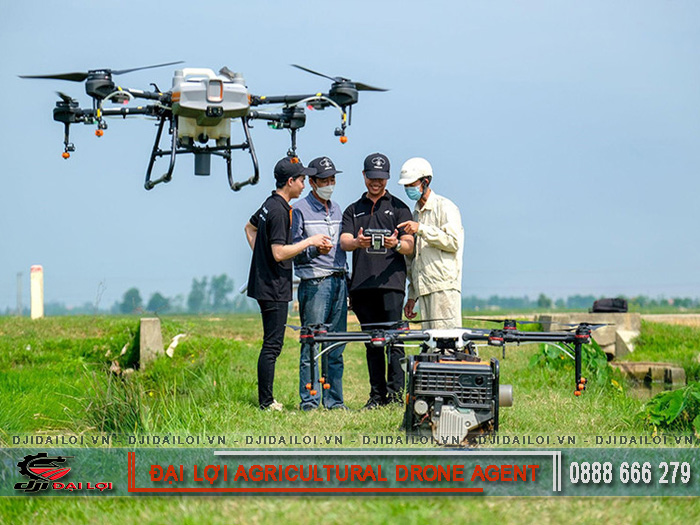.jpg)
When operating an agricultural drone, many users focus mainly on spraying, seeding, or crop monitoring efficiency while ignoring warning signals. However, delaying detection and repair not only causes financial loss but can also interrupt the entire farming cycle.
Here are the main consequences of failing to fix drone errors in time:
Detecting and fixing errors early helps maintain drone performance, ensure safety, and protect profitability throughout the farming season.
Fixing an agricultural drone requires proper knowledge, tools, and testing conditions. Unprepared repairs may worsen the issue.
Proper preparation ensures safe, efficient troubleshooting without causing new errors.
Not every agricultural drone problem requires professional service. Many common issues can be fixed on-site using a systematic approach.
Ensure the battery is fully charged, not swollen, leaking, or dropping voltage abnormally. Use a voltmeter to measure each LiPo cell (>3.7 V/cell recommended).
→ Always rely on instruments, not just app indicators, which may misreport due to faulty sensors.
Most drones (e.g., DJI, XAG, Yanmar) show errors via app or LED patterns. Connect to the official app and check “Flight Records” or “Error Logs.”
→ Each code has meaning: ESC (speed controller), IMU (balance), GPS loss, etc. Never continue flying before identifying the cause.
Damaged or bent propellers cause imbalance or flight drift. Remove and test each on a flat surface. Replace with model-specific propellers only.
→ Never use off-brand blades-they can damage motors.
If the drone drifts or spins, IMU or compass calibration may be off. Open “Sensor Calibration” in the app and recalibrate on a flat, metal-free surface.
→ Avoid areas with magnetic interference (vehicles, workshops, power stations).
Software bugs often cause errors. Update to the latest firmware or perform a factory reset.
→ Review the firmware changelog before updating to prevent hardware incompatibility.
If the pump or nozzles malfunction, inspect flow sensors and hoses. Manually test each part via the app to locate blockages or defects.
→ Avoid washing with high-pressure water-this can damage seals or electronics.
After repairs, test-fly at low altitude in an open space. Check motor sound, vibration, and hover stability. Proceed only when all systems perform normally.
Even with guides, users often make costly mistakes:
If uncertain, contact an experienced agricultural drone service center-especially for GPS, IMU, or software-related errors.
After fixing, confirm stability before resuming operations. Key signs include:
If no errors recur after 2–3 short test flights (<10 min each), the drone is ready for field work.

Many operation errors originate from poor equipment choice. Select the right agricultural drone model based on farming scale, terrain, and user experience.
|
Farm size |
Recommended models |
|---|---|
|
< 3 ha |
DJI Agras T10, XAG V40 Mini |
|
3–10 ha |
DJI T20P, XAG P40 |
|
> 10 ha |
DJI T40, XAG V100, Yanmar YR2 |
|
Price range |
Typical models |
|---|---|
|
< 100 million VND |
Local drones, DJI T10 Lite |
|
100–200 million VND |
DJI T20P, DJI T25P |
|
> 200 million VND |
DJI T40, T50, T70P, T100 |
Always verify after-sales service, spare-part availability, app compatibility, and firmware support before purchasing.
Mastering agricultural drone troubleshooting not only reduces maintenance costs but also ensures safe, uninterrupted farming. Equip yourself with the right knowledge, tools, and regular diagnostics to keep your drone in optimal condition. Choosing a suitable model from the start minimizes future errors and maximizes return on investment.
Software errors appear as alerts in the control app; hardware faults cause abnormal noise, vibration, or startup failure.
Yes. Recalibrate the compass, update to the latest firmware, and test in an open, interference-free area.
Not always. Check wiring, propellers, and load first. Replace only if the ESC remains faulty afterward.
Whenever the drone drifts, loses altitude stability, or displays “IMU Error” in the control app.
No. Each drone requires its own battery type. Using an incompatible one can cause fire or controller damage.
Update firmware if you encounter recurring software issues, unstable flight, or when the manufacturer releases security or feature updates.